
New releases
A smarter, simpler Attentive
Explore new features →
Explore new features →
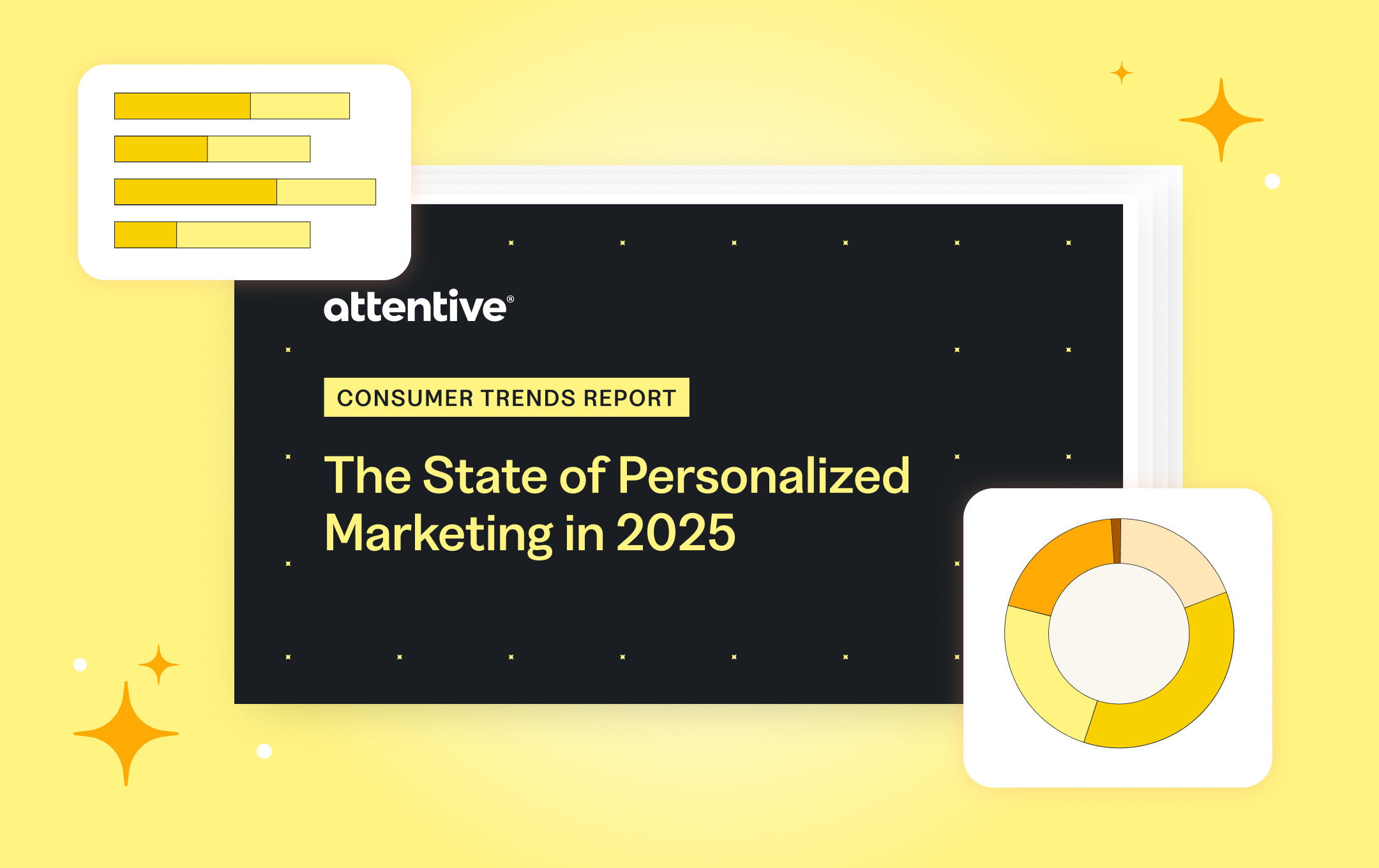
Understanding how your customers engage with your brand and make purchase decisions is essential to crafting a high-performing marketing strategy.
In the Consumer Trends Report: The State of Personalized Marketing in 2025, we surveyed 3,300 global consumers to find out how brands can improve the shopping experience. Now we’re sharing new, never-before-seen data from the survey to give you insight into some of the most compelling differences between generations.
While there are clear patterns among generational cohorts, our research also revealed significant variations within each age group. This highlights an important truth for marketers: demographic segmentation is just a starting point. The brands seeing the strongest results are those that personalize at the individual level.
For each generation, learn:
Then find out how AI can help you scale true 1:1 personalization to adapt to each customer’s unique preferences to drive better engagement, conversions, and loyalty across your customer base.
No matter what age groups you’re targeting, one thing is clear: Personalized experiences drive brand loyalty. While there are differences across generations, some fundamental loyalty drivers stay at the top across age groups.
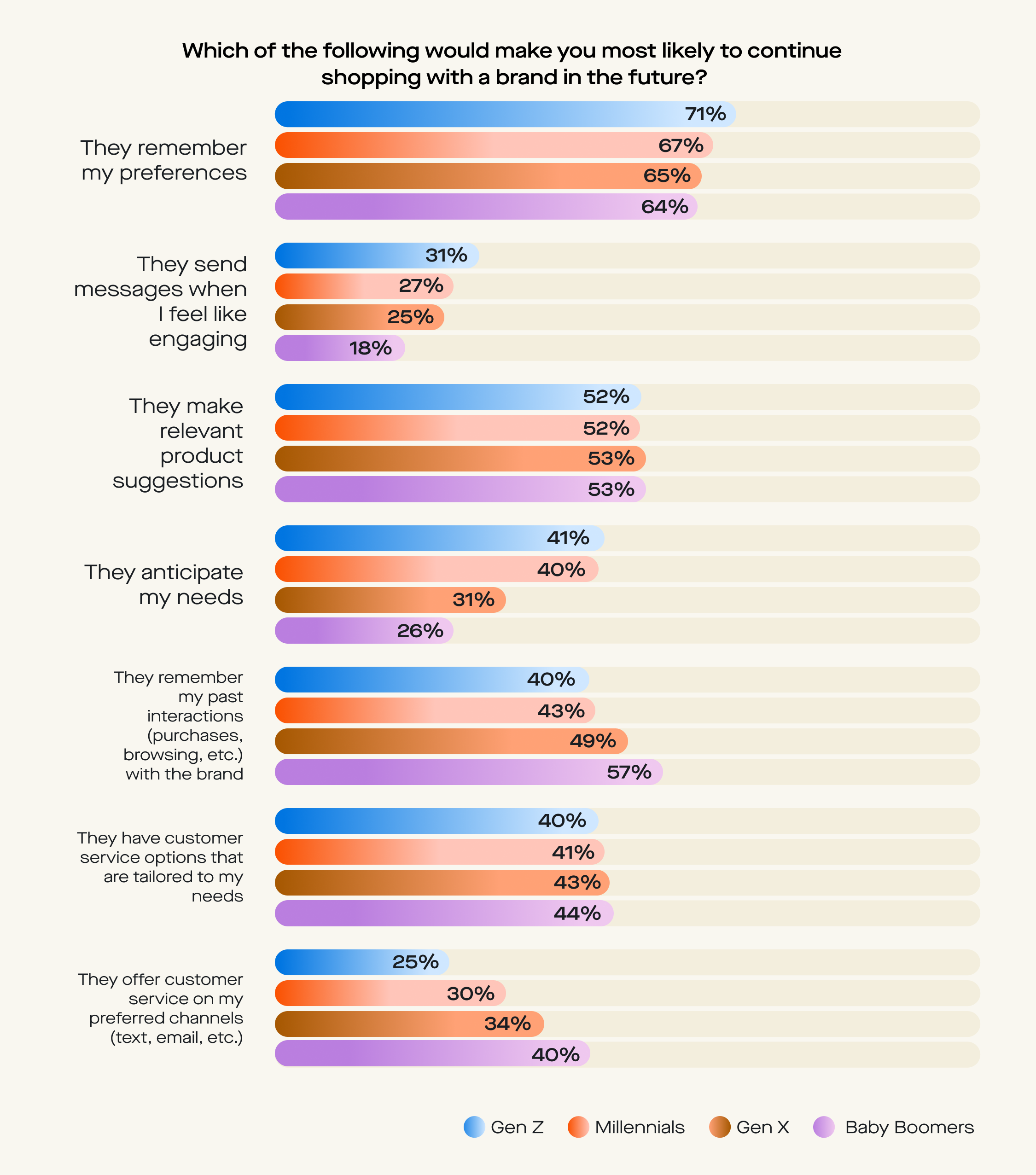
From Gen Z to Baby Boomers, all these generations agree that remembering their preferences is the #1 factor that makes them likely to continue shopping with a brand in the future. This becomes more important with each younger generation. 71% of Gen Z want their favorite brands to remember their preferences.
So knowing what your customers want and delivering experiences that show them you know them should be your top priority to keep customers coming back.
Start gathering data by:
Then, activate this data across touchpoints. For example, if they purchase minimalist home décor, cater all your messages around that theme. Or if they click on certain types of messages, bump up the volume on what they engage with and send less of what they don’t.
All generations will also be more loyal to brands that suggest relevant products. Gen X, Millennials, and Gen Z all rank it as the second most important factor for brand loyalty and Baby Boomers list it third. So it’s worth prioritizing product recommendations as a retention effort.
Our internal data supports this, too. Attentive customers who use product recommendations in triggered emails see a 37% higher conversion rate than those who don’t.
Help your customers find their next purchase more easily by surfacing products they’ll like instead of showing the same products to each customer.
Add relevant products to your post-purchase flows, abandonment messages, and one-time campaigns like product launches or sales announcements to make shoppers more likely to buy again.
In Designstuff’s welcome journey, the brand uses conversational SMS to provide recommendations for a customer’s first purchase:
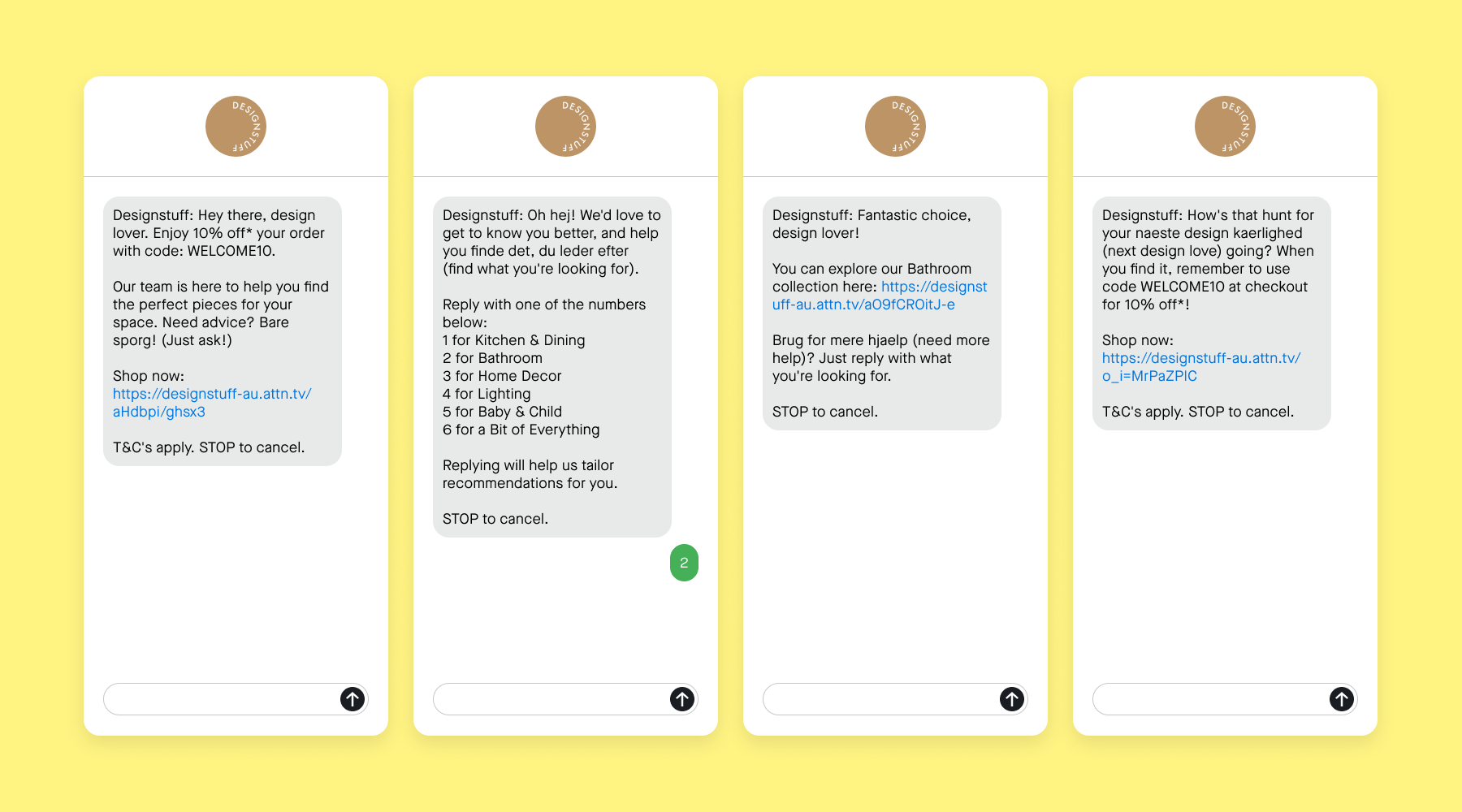
All generations value brands that remember their past interactions, but it becomes increasingly more important with each older generation. Baby Boomers rank it as their second most important loyalty factor.
For older customers especially, show that you’re taking their relationship with your brand into account when sending marketing communications. Don’t promote items they’ve already purchased (unless you sell consumables) and avoid messaging them about products or categories they’re probably not interested in.
You can do this by:
Anticipating customer needs becomes more important with each younger generation, so will likely continue to grow.
Act proactively by implementing behavioral flows that predict what customers need before they have to seek it out:
Older generations are more likely to be loyal to brands that offer customer service on their preferred channels (e.g., text message, email, phone, etc.). While only 25% of Gen Z say this is a top loyalty factor, 40% of Baby Boomers consider it important.
If you have an older customer base, cater to these customers by:
AI can enhance all your personalization efforts. Solutions like Attentive AI™ identify patterns and preferences in customer data that might not be obvious through manual analysis. This lets you deliver hyper-personalized experiences at scale and achieve better results—virtually impossible without AI assistance.
This means:
With the upcoming rollout of RCS (Rich Communication Services) Business Messaging, product recommendations will become even more engaging. Features like interactive carousels will let customers browse suggested products right in their text conversations, add them to their cart, and check out without leaving their messaging app—making discovery smoother and increasing the likelihood of conversion.
When you’re trying to increase purchases, it can be challenging to know what tactics to focus on. So we asked consumers what influences their purchase decisions. While there were some similarities across generations, there are some notable differences to consider when crafting your marketing strategy.

Make word-of-mouth marketing a core part of your strategy by activating a referral program and using user-generated content to showcase real customer experiences.
Generational differences emerge in secondary influences. For Gen Z and Millennials, seeing products trending online is the second most influential factor. For Gen X and Baby Boomers, advertisements hold more sway as their second most important influence—though this holds strong for younger generations as well.
This reveals a fundamental difference in how generations discover products. Younger shoppers are more influenced by what's popular in their digital communities, while older consumers respond strongest to traditional advertising channels.
Influencers and celebrities have significantly more purchase influence over younger shoppers. Gen Z is nearly six times more likely than Baby Boomers to name them as a top factor.
For brands targeting younger audiences:
We think this could be more nuanced than the data suggests, though. Baby Boomers may be thinking of traditional creators on social media promoting their lifestyle, but might be influenced by their favorite NPR podcast host.
So it might just be about experimenting to find out who influences them and going beyond traditional influencers.
Special offers through loyalty and rewards programs resonate more with Baby Boomers and Gen X than with younger generations.
If you have an older customer base, highlight points, rewards, and tier status in your communications.
Expert recommendations work across generations but are especially effective with younger generations—75% of Gen Z and 70% of Millennials are drawn to them.
Though over half of Baby Boomers still find this type of social proof persuasive, so leveraging expert opinions is worth pursuing for all generations.
You can include many of these purchase influences in your SMS and email strategy and prioritize different tactics depending on which age group you’re targeting:
By knowing what makes customers buy, you can craft more persuasive messages that speak directly to your target audience’s decision-making factors. However, the data shows that preferences vary within each generation.
If you want to go beyond age-based segmentation, we recommend segmenting your emails and texts by what types of content each individual subscriber engages with.
For accurate segmentation, it’s essential to be able to identify subscribers across devices and sessions—as 61% of consumers switch devices or take multiple sessions during their shopping journey.
Products like Attentive Signal can better identify site visitors when customers switch devices or start a new browsing session thanks to more persistent cookies and advanced server-side tagging. This enhanced tracking means more comprehensive customer profiles for more accurate segmentation—ultimately helping you reach your audience more effectively.
Brands using Attentive Signal see a 20% increase in conversion rates and 95% more revenue from triggered emails.

Timing is everything when it comes to marketing communications. Sending messages when your customers are most likely to open and engage with them can significantly impact your campaign performance.
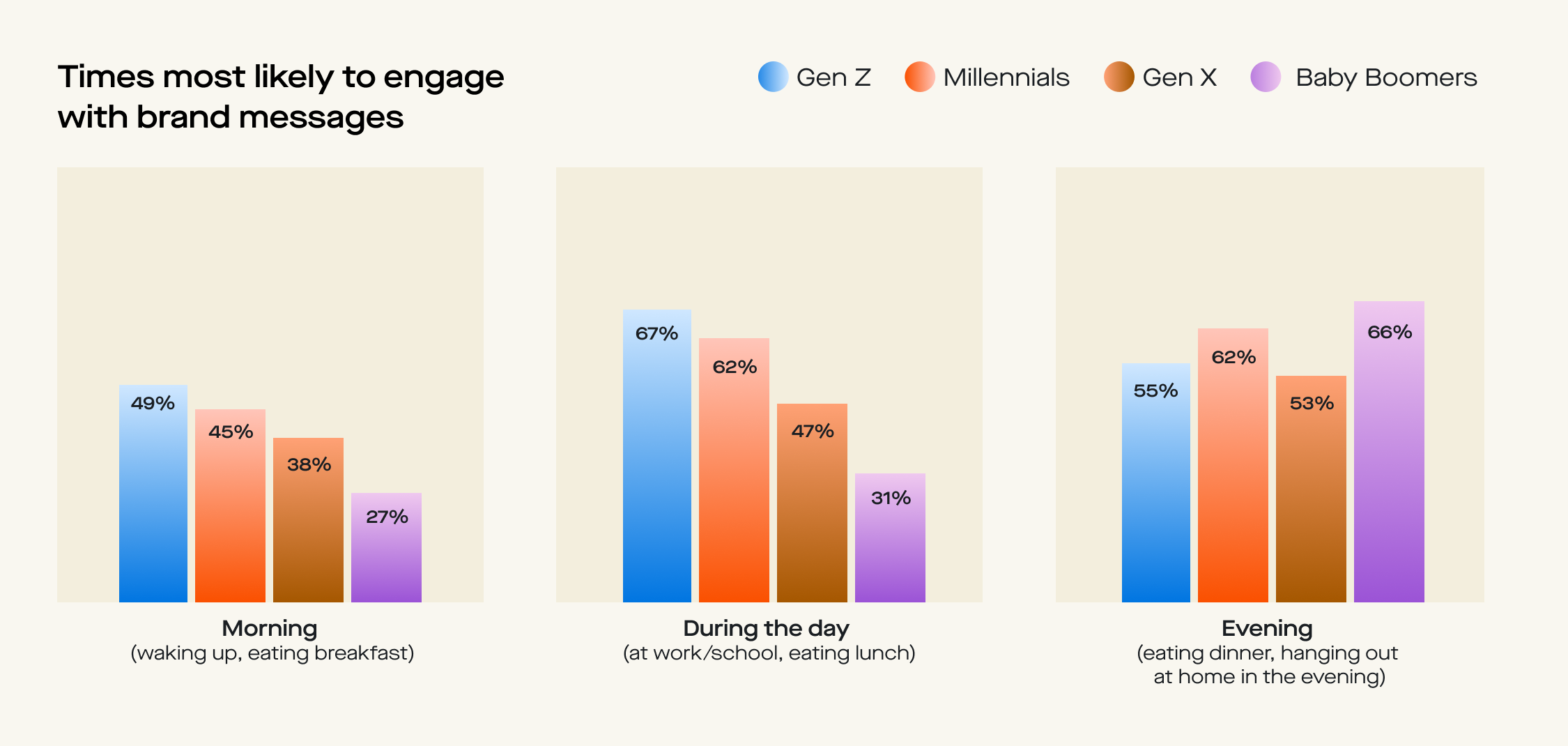
Gen Z is most flexible with their engagement times, with high engagement across morning, daytime, and evening. They’re most likely to engage during the day (67%), followed by evening engagement (55%). Still, 49% are likely to engage with brand messages in the morning.
Millennials are just likely to engage with brand messages during the day and evening (62% for each). And a solid 45% engage in the morning.
Older generations prefer evening. Gen X has a slight preference for evening (59%) over daytime (52%) and Baby Boomers demonstrate a strong evening preference—being more than twice as likely to engage in the evening (66%) compared to the morning (32%).
Segmenting message timing by generation is a great idea in theory, but the data shows that’s not so clear-cut.
If you send all Baby Boomers messages in the evening, you still miss out on the chance to engage with over a quarter of them in the morning. And since younger generations engage more throughout the day, it’s even harder to pin them down.
Instead, customize your message timing to shoppers’ individual engagement patterns. You can start by segmenting with workflows using your customer data, but AI makes personalized send-time optimization much more manageable.
Cecil & Lou, a children’s clothing brand, tested this approach using Attentive’s Send Time AI to find the optimal time of day to reach individual subscribers.
The results were impressive:
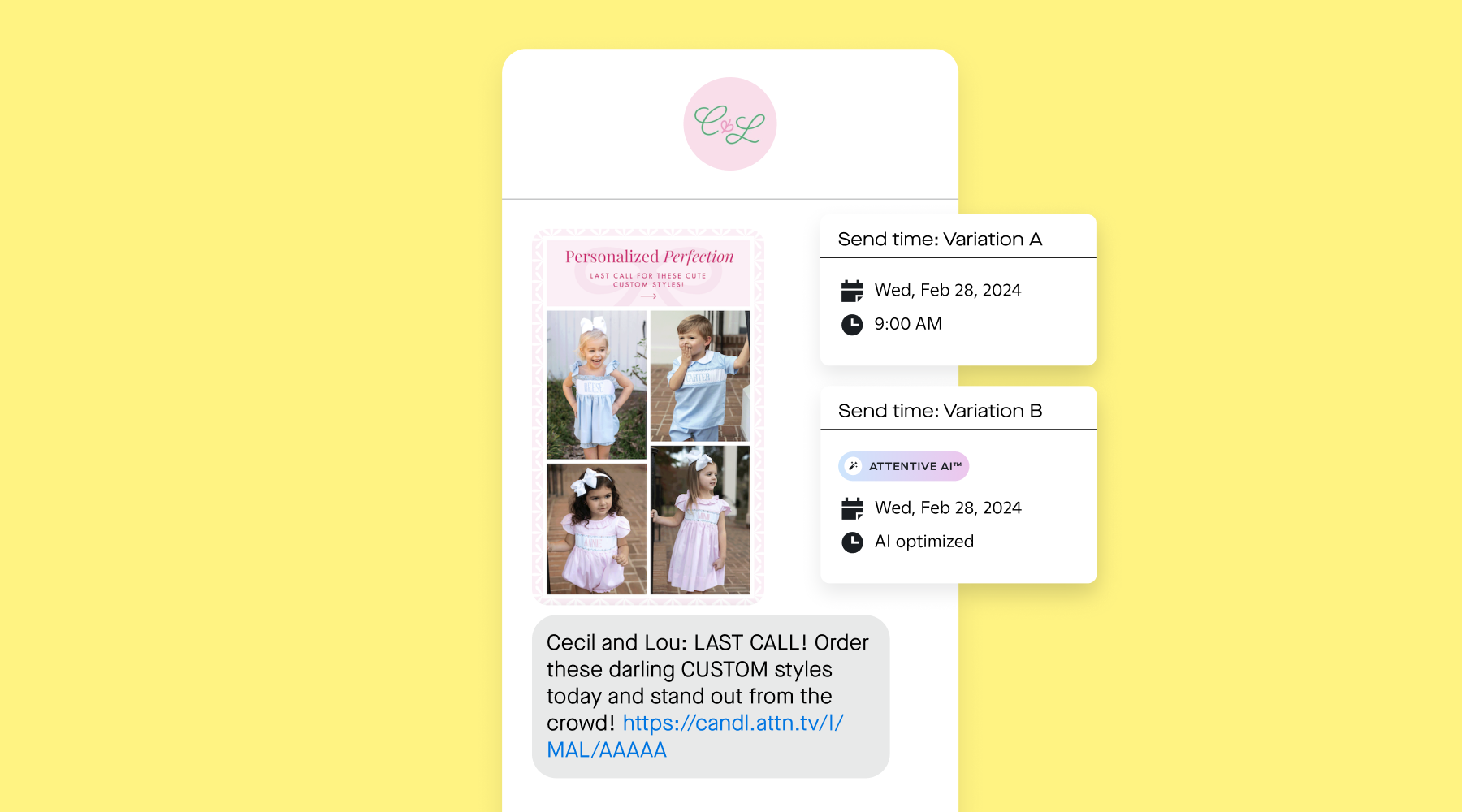
Personalizing send times at the individual level, rather than relying on generational trends or rule-based segmentation, can significantly boost campaign performance.
Our research reveals clear generational patterns in how consumers interact with brands, what drives their loyalty, and what influences their purchases. These insights provide valuable starting points for catering your marketing strategy to your customers.
For a younger customer base, prioritize:
For an older customer base, focus on:
The best way to engage and convert customers, however, is to make things personal. Not every consumer wants the same things.
AI makes true 1:1 personalization finally possible at scale. Tools like Attentive AI™ analyze individual customer behavior to deliver hyper-personalized experiences—from optimizing send times to tailoring content and product recommendations.
Brands that use Attentive AI™ see dramatic KPI improvements:
As RCS Business Messaging becomes available, you’ll have even more ways to create rich, interactive shopping experiences that perform better.
Want to learn what else these 3,300 consumers say brands can do to improve their shopping experience? Download the 2025 Consumer Trends Report to find out how to gain a competitive advantage.

In January 2025, we partnered with CITE Research to survey 3,300 consumers (2,000 US respondents, 1,000 in the United Kingdom, and 300 in Australia) about their shopping habits and brand interactions.
Survey participants met the following criteria: